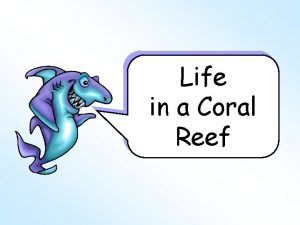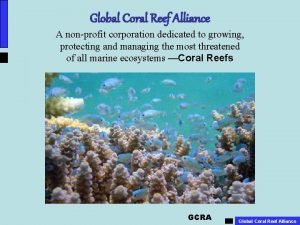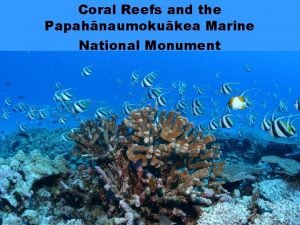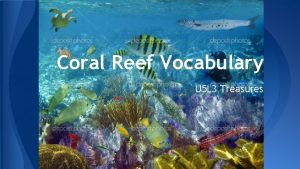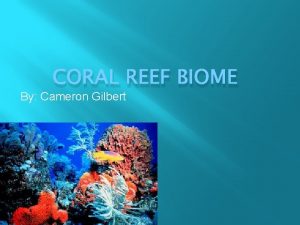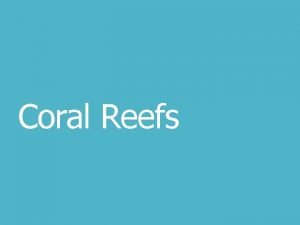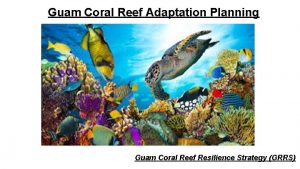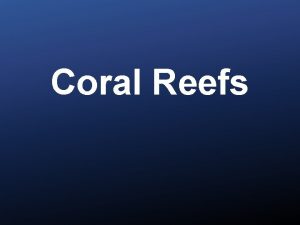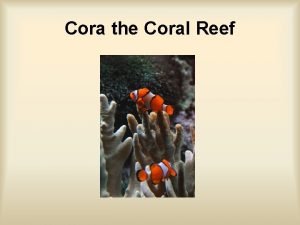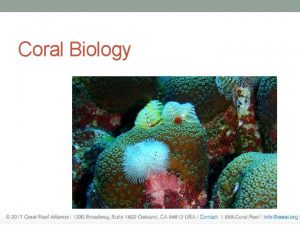PIRO Coral Reef Ecosystem Management Needs Gerry Davis










- Slides: 10

PIRO Coral Reef Ecosystem Management Needs Gerry Davis, PIRO Habitat ARA PIFSC External Review April 2016

Management Uses of PIFSC Data (to date) • Showed resource status linkage to human population densities (Pacific-wide ecosystem monitoring) • Characterized reef resources for PMNM management planning (archipelagic RAMP cruise reports) • Helped prioritize sites for possible management (larval transport information) • Identified presence of invasive species (ARMS genetic analysis) • Helped guide EFH reviews and refine HAPC (nearshore reef maps) • Informed adaptive management and impacts of

Challenges to Using PIFSC Data for Management • Spatial-scale of RAMP data is often too broad for use in EFH or ESA consultations • Data availability can be a challenge • PIFSC and PIRO have built coral reef programs around different mandates

Data PIRO Needs for Management 1) Detailed assessments at local priority sites i. e. , high development potential

Data PIRO Needs for Management 2) Data to inform adaptive management options and causality

Data PIRO Needs for Management 3 a) Data to understand major threats to local coral reefs e. g. , watershed level EFH and ESA-species • Land-based sedimentation/ storm-water/ pollution impacts

Data PIRO Needs for Management 3 b) Data to understand major threats to local coral reefs e. g. , watershed level EFH and ESA-species • Land-based sedimentation/ pollution • Fishing impacts to coral reef ecosystems

Data PIRO Needs for Management 3 c) Data to understand major threats to local coral reefs e. g. , watershed level EFH and ESA-species • Land-based sedimentation/ pollution • Fishing impacts to coral reef ecosystems • Climate impacts to coral reef ecosystems

Possible Priority Management Sites (Focus Areas) Am. Samoa: • Fagaalu watershed • Nuuuli • Pago Harbor • Leone • Vatia Guam: • Apra Harbor • Manell-Gues watershed/Cocos Lagoon • Tumon Bay Hawaii: • State of Hawaii Harbors • West Hawaii • South/West Oahu • West Maui (Kahekilli) CNMI: • Saipan Lagoon • Lao Bay • Garapan Pacific I. Marine National • Talakhaya, Rota Monuments: • CNMI (Maug, Uracas, Asuncion • Tinian Harbor • CNMI DOD training areas)

Conclusion and Recommendations • PIFSC is a willing and interested partner • However- historically constrained by funding • PIFSC-CREP data has been useful to management in a general way • Priority needs for ecosystem science to support management: Studies to: 1) Understand local sites of high potential impacts 2) Inform adaptive management 3) Understand the major threats • Science based tools for improving management success • Data to measure management action results

